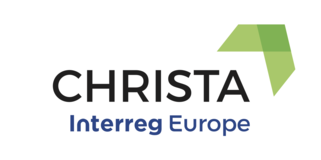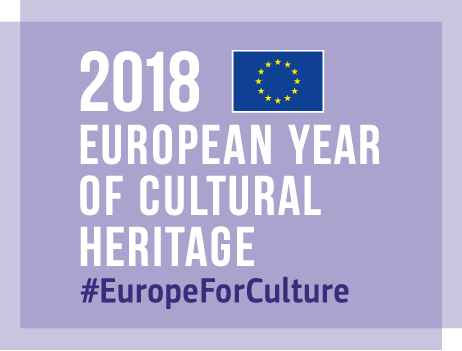The policy and decision makers from partners regions from partners regions met in Venice, in order to focus on the exchange of experiences and good practices among the partners, on all 4 priority themes (intangible heritage, industrial heritage, interpretation facilities, innovations & digitisation), which are considered as a tool for the touristic development planning.
23 guests representing 9 project partners and 4 persons of the Veneto Region staff took part in the Study Tour. The Study Tour took place in different Islands of the Venetian Lagoon with transfers by boat.
The Veneto Region staff showed to the partnership several points of interest of the Venetian heritage for the project activities, each of them connected to the 4 priority theme`s object of the project.
The first day started in the ancient Tenuta Venissa placed in the Mazzorbo Island, which historically was used as a monastery but nowadays it is a holiday resort for tourism 'of excellence'.
Ms Nadia Giaretta, the representative of the Veneto Region officially greeted the project partners and gave the floor to the invited speakers who presented different projects developed in the territory for the promotion and valorisation of natural and cultural heritage in Venice and surroundings.
Mr Alberto Barausse, explained to the audience the Life Vimine Project (innovation & digitisation), a project whose aims are to define and implement an integrated approach to the protection of salt marshes from erosion and landscape management in the northern part of the Venice Lagoon.
Mr Eriberto Eulisse, representative of the Centro Internazionale Civiltà dell’Acqua Onlus introduced mission, objectives and activities of the non-profit organisation, as well as the recent project over the use of digital tool, in particular digital Apps in order to promote and valorise the water stream of the Veneto Region (intangible heritage/innovation & digitisation). He presented the Water Museum of Venice and the new digital tools.
Both presentations were very much appreciated by the audience since it interacted with the questions and exchange of experiences.
The Musme – Museum of History of Medicine in Padua (innovation and digitisation, interpretation facilities) was presented through a video and followed by a detailed visit of the Tenuta Venissa and its agricultural recovery through viticulture and horticulture, also experiencing the natural and traditional heritage of the ancient religious site.
After participants visited lunch, the group moved to the coloured Island of Burano, renowned for its intangible heritage of Lace - the ancient tradition of the lace technique presented at the Lace Museum by old women working on laces. Participants visited the Shipyard Amadi for a brief introduction to the traditional construction techniques of the typical lagoon boats, passed down generation by generation within the owner family Amadi (intangible heritage, industrial heritage), who explained how a boat used to be built, the materials used as well as the tools. After, Mr Roberto Pugliese, representative of the Consorzio Venezia Nativa presented its marketing project on local traditional cuisine.
The second day of the Study Tour started the Burano Island with presentation about the fishing tourism by representatives of the Cooperativa Pescatori di Burano and a practical experience on a traditional lagoon fishing boat with demonstration of the ancient techniques used and the explanation about how the technique is used nowadays linked to the ones of the past (intangible heritage, interpretation facilities, innovation & digitisation). Participants had an opportunity to see 'Life Vimine' project' in practice and to see the ancient and huge complex of shipyards and laboratories of Venice Arsenale, visit the 'Tese' and the structures retrieved and reused within the Arsenale: the Tesa 104, seat of the ISMAR the 'Istituto delle Scienze Marine', a sample of industrial heritage restored and reused as Research center with the tower used as a public space for events and exhibitions.
The Study Tour was concluded with an internal meeting, where conclusions of the Study Tour, the policy learning implications and the next steps of the project were discussed.




